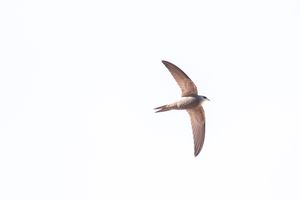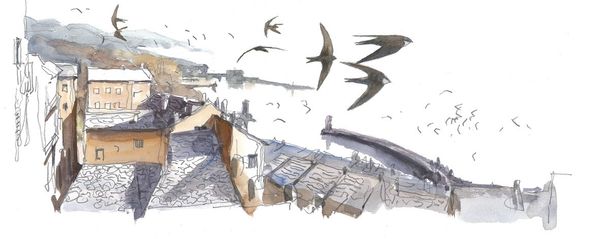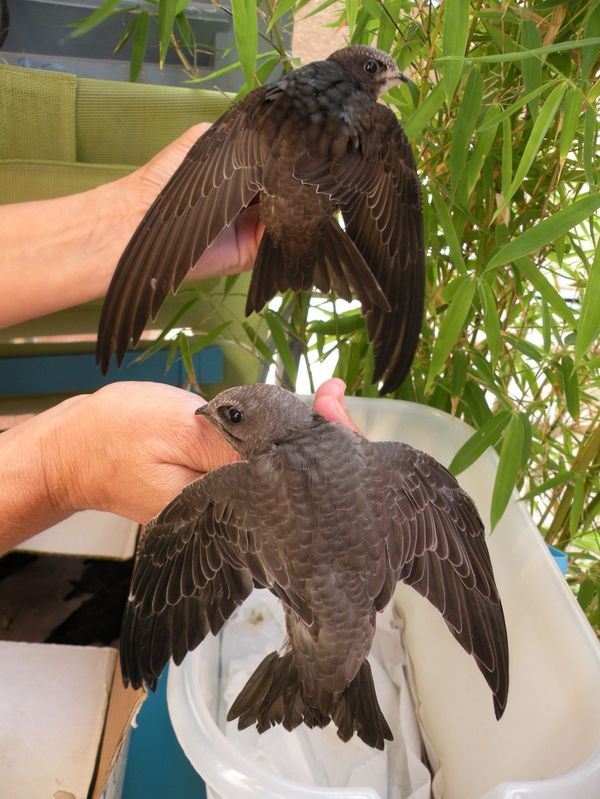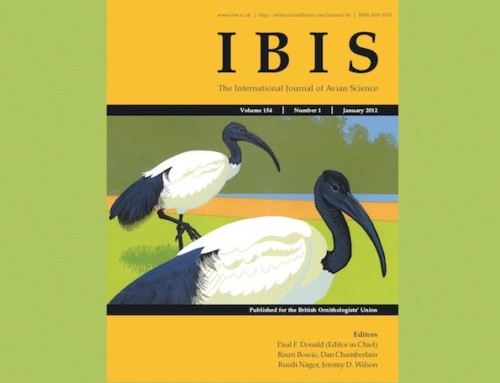 LINKED PAPER
LINKED PAPER
Cryptic hybridization between Common (Apus apus) and Pallid (A. pallidus) Swifts. Cibois, A., Beaud, M., Foletti, F., Gory, G., Jacob, G., Legrand, N., Lepori, L., Meier, C., Rossi, A., Wandeler, P. & Thibault, J.-C. 2022 Ibis. doi: 10.1111/ibi.13087 VIEW
This story started in Corsica, and more precisely in the city of Bastia. For years, ornithologists have been observing two species of swifts: the Common Swift (Apus apus) and the Pallid Swift (A. pallidus). Both are migratory birds that spend the winter in Africa and return to Europe in the summer.
The Common Swift has a large breeding range in the Palearctic, extending from Western Europe and North Africa to China. The Pallid Swift has a scattered distribution across the Southwest Palearctic, from Portugal to Turkey, and in North Africa and the Middle East, from Mauritania to Iran. Common and Pallid Swifts are closely related species, having diverged approximately 2 million years ago. The two species likely underwent a phase of differentiation during glacial periods, when they restricted their breeding grounds to different southern or eastern refugia. Warming conditions after the Last Glacial Maximum allowed for the expansion of both species in Europe, and in particular of Pallid Swifts in the northern parts of the Mediterranean.

Figure 1 Swifts (Apus sp.) above the roofs in Bastia © Denis Clavreul.
However, a more recent phenomenon has also likely played a role in the distribution of swifts: the use of human-made structures as breeding sites. Ancestral breeding sites, mostly tree cavities and cliffs, are still used by Common Swifts although the number of breeders in buildings is now considerably higher. Pallid Swift colonies are frequently found on cliffs around the Mediterranean, although their nesting in buildings is quite widespread, particularly in the northern part of their range. In Bastia, both species nest under roofs, in cracks of old walls, or in shutter boxes, sometimes in the same building.
Our study, published recently in Ibis, focused on the genetic characteristics of both species in Bastia, where we found the presence of hybrid individuals, i.e., with a genome carrying both Pale Swift and Black Swift genes. These results confirmed that hybridization can occur between the two species, but also suggested that the proximity of urban breeding colonies facilitate gene exchange between species, a phenomenon known as introgression. And the most surprising thing was also to find traces of hybridization in other localities in Europe, such as Fribourg in Switzerland, where only black swifts nest. Apparently individuals of hybrid origin rise from the contact zone between the two species, thus spreading pale swift genes northward.

Figure 2 Young swifts (Apus sp.) in a care centre in Bastia. Top Black Swift, below Pallid Swift © J.-C. Thibault.
The two species can be difficult to separate based on morphology alone. Isolated Pallid Swifts are most probably overlooked outside their known breeding range by the vast majority of birdwatchers. For instance, only five observations of Pallid Swifts have been reported outside of the distribution range in Switzerland since 2001, all by skilled ornithologists. Hybrids can hardly be assigned to Common or Pallid Swifts based on morphological traits and are most probably not identifiable in flight.
Hybridization is a fairly frequent phenomenon in nature, where genetic differentiation between species is often continuous and spread over time. Our study does not question the relevance of considering these two taxa as species. However, it confirms that the two species can form mix-pairs probably more often than suspected. There is no doubt that this will arouse the curiosity of birdwatchers and ringers, looking for Pallid Swifts breeding outside their usual breeding range, as well as individuals with unusual morphology.
References
Chantler, P. & Driessens, G. 2000. Swifts. A Guide to the Swifts and Tree Swifts of the World. 2nd edition. Sussex, UK: Pica Press.
Joseph, L. 2018. Phylogeography and the Role of Hybridization in Speciation. In Bird Species: How They Arise, Modify and Vanish. (ed. D. T. Tietze), pp. 165-194. Springer International Publishing.
Oberli, J., Gerber, A. & Bassin, A. 2013. Un martinet pâle Apus pallidus dans une colonie jurassienne de Martinets noirs A. apus: un premier cas d’hybridation? Nos Oiseaux 60: 205-208.
Pellegrino, I., Cucco, M., Harvey, J. A., Liberatore, F., Pavia, M., Voelker, G. & Boano, G. 2017. So similar and yet so different: taxonomic status of Pallid Swift Apus pallidus and Common Swift Apus apus Bird Study 64: 344-352. VIEW
Thibault, J.-C., Armand, T., Beuneux, G., Cibois, A., Courtois, J.-Y. & Seguin, J.-F. 2020. Common Swifts (Apus apus) nesting in mature pine forests in Corsica. Ecologia Meterranea 46: 75-82. VIEW
Image credit
Top right: Pallid Swift (Apus pallidus) in flight © Martin Van Boone.
If you want to write about your research in #theBOUblog, then please see here.





